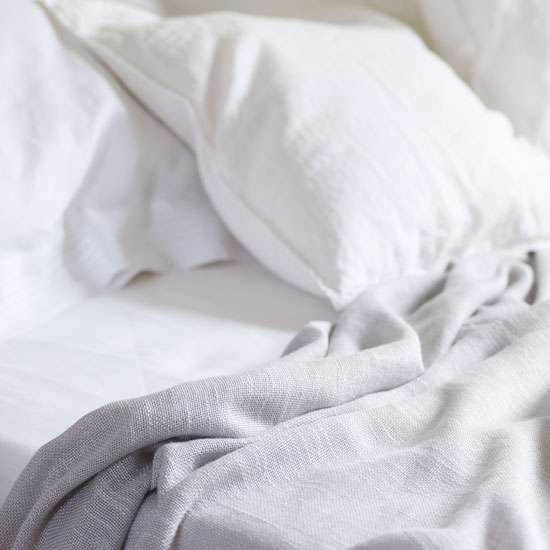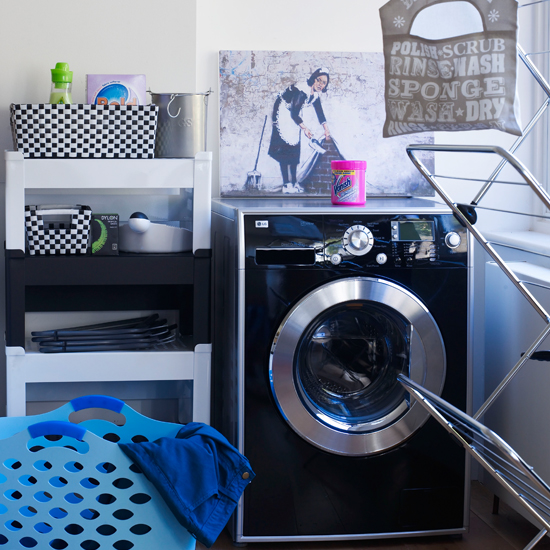If you're waking up with rows of red itchy bites, especially on your face, neck, shoulders and limbs you may be sleeping with bed bugs. Want to learn how to get rid of bed bugs? Here's our simple guide...
Bed bugs are small, brown and flat blood-sucking insects that hide and breed in cracks and crevices in and around your bed. They emerge at night to feed on a sleeping host, attracted by their body heat and the carbon dioxide they exhale.

Bed bugs aren't known to spread diseases. Their bite isn't harmful to humans and although some people can develop an adverse skin reaction to bed bug bites, some don't react at all. However just knowing they're there, waiting for you, can be an unsettling thought.
A bed bug infestation doesn't mean you have a dirty home and you're not to blame either - the cheeky little pests can end up in your adode and quickly multiply after hitching a ride in luggage, or in pre-used furniture. They're also common in multi-occupancy buildings, such as hotels and blocks of flats where they can easily spread from room to room by crawling through pipes and cracks in the walls.
How to spot bed bugs
Adult bed bugs measure around 6mm across and their elongated eggs and larvae are much smaller so they can be hard to detect. They don't fly or jump but can crawl quickly and are experts at hiding.
Inspect your mattress, bed frame and surrounding sleeping area for signs of bed bugs, looking for clusters of brown spots - their droppings, and discarded larvae shells. You might also be able to find blood spots on your bedding and smell the musty scent given off by adult bed bugs.
Always check second-hand furniture for bed bugs before you bring any into your home. If you're travelling, check the hotel beds and headboards too and store your suitcase off the floor on a luggage rack to avoid them climbing onboard.

Not bed bugs? Follow our advice on how to get rid of fleas.
How to get rid of bed bugs
If you have bed bugs at home, take immediate action to avoid an infestation. It's best to contact your local council who may treat your home for free, or a pest control company, preferably a member of the British Pest Control Association (BPCA) as they are pros at getting rid of stubborn bed bug infestations and have access to the most effective insecticides and equipment available.
DIY guide to getting rid of bed bugs
We recommend getting professional help to get rid of bed bugs as these pests are notoriously hard to eradicate, due to their immunity to some household insecticides. Plus an infestation can easily recur if any eggs are missed, but if you want to try DIY pest control, take these measures:
- Completely strip your bed and put the infested bed linen, as well as pyjamas and soft toys straight into a 50°C - 60°C wash, if possible. Then tumble dry the items on the hottest setting for 30 minutes as the heat will kill any remaining bed bugs and their eggs. Placing bagged-up laundry in the freezer for three days will also kill the pests.

- Dismantle your bed furniture and thoroughly inspect it along with your mattress and any other potential hiding places around the bed such as carpets, behind bedside tables and cracks in walls (which will need to be sealed) then use a vacuum cleaner with a plastic crevice nozzle attachment to suck up the bed bugs, including their eggs, larvae and droppings. Throw away the vacuum cleaner bag and its contents in a sealed bin liner, immediately. A heavily-infested mattress will need to be disposed of safely and swapped for a new one.
- The little pests can crawl quite far, so you should go over the whole room (if not your entire home) with a fine-toothed comb, looking under furniture, inside drawers, behind peeling wallpaper - everywhere, for signs of them.
- Next use a special bed bugs insecticide, following the manufacturer's instructions, to treat all infested areas and kill any remaining bed bugs.
- Steam cleaning is chemical free and instantly kills bed bugs and their eggs.
- Tea tree oil can also be used as a natural bed bug insecticide - mix up your own spray, using 1 drop of tea tree oil to every fluid oz of water.
No comments:
Post a Comment